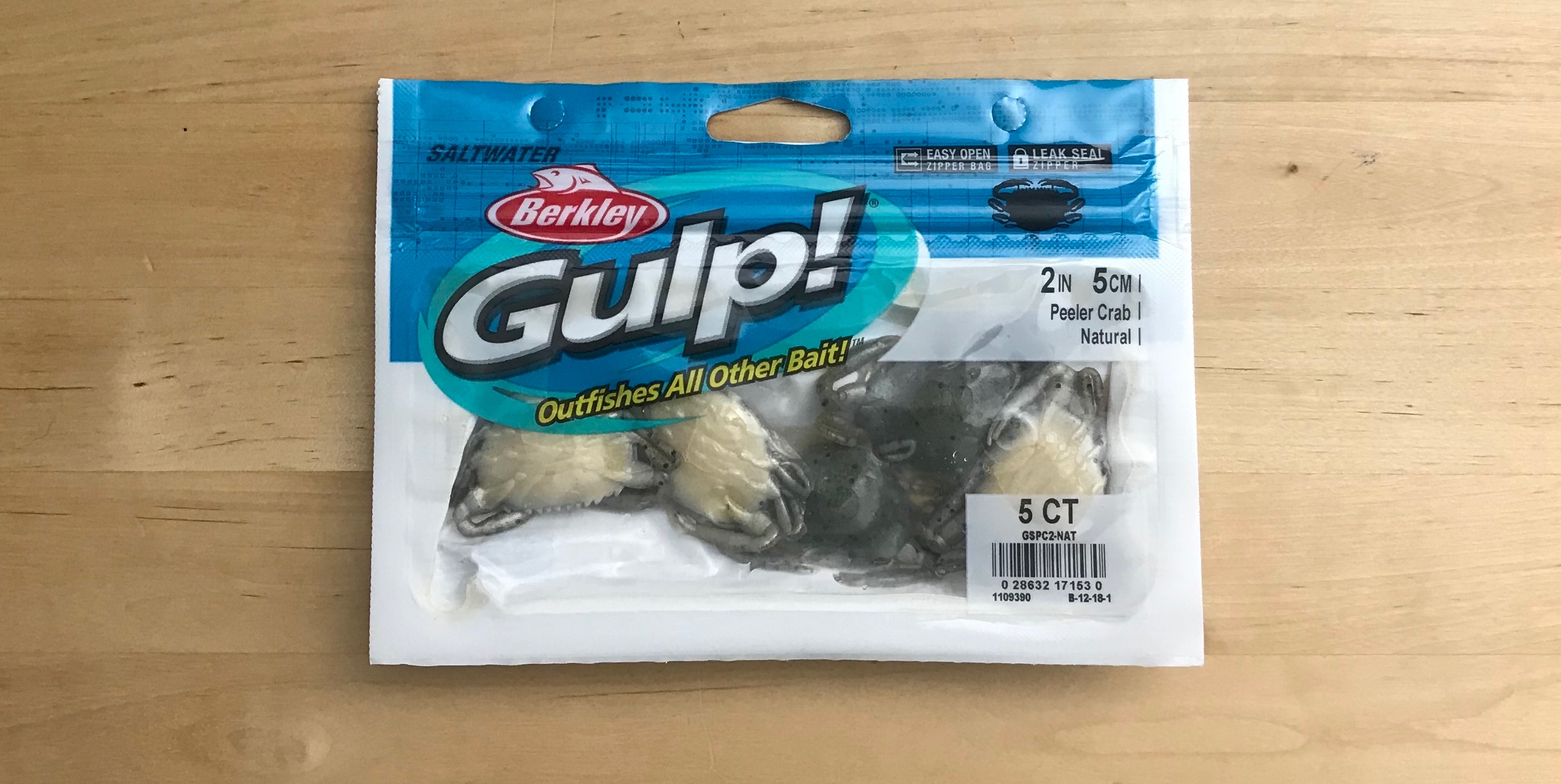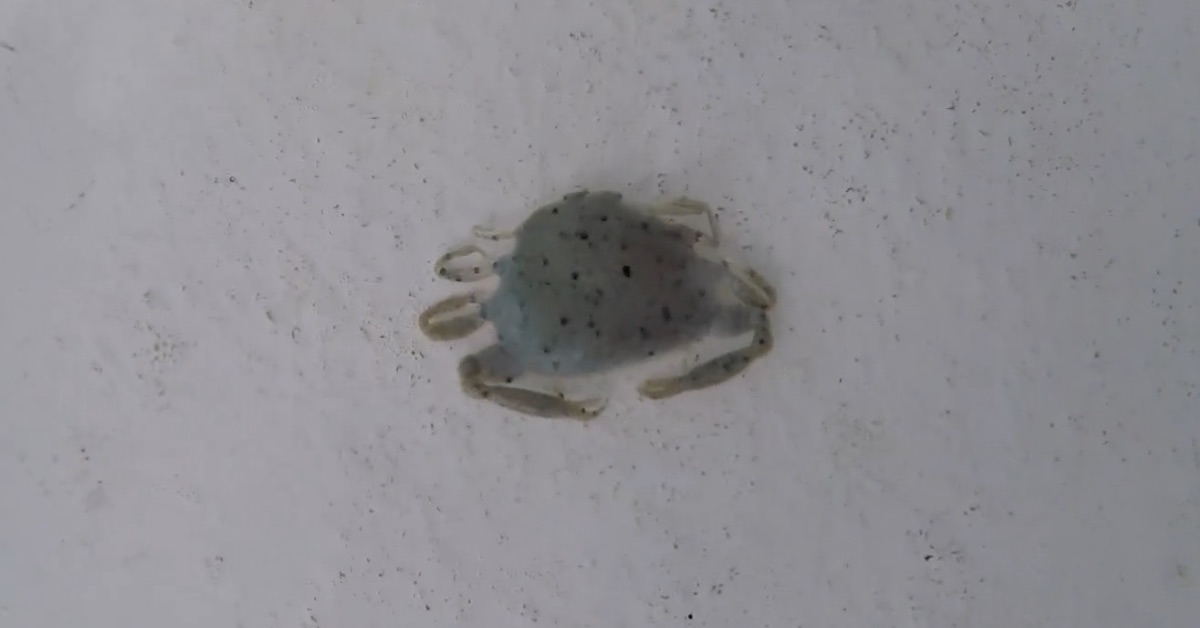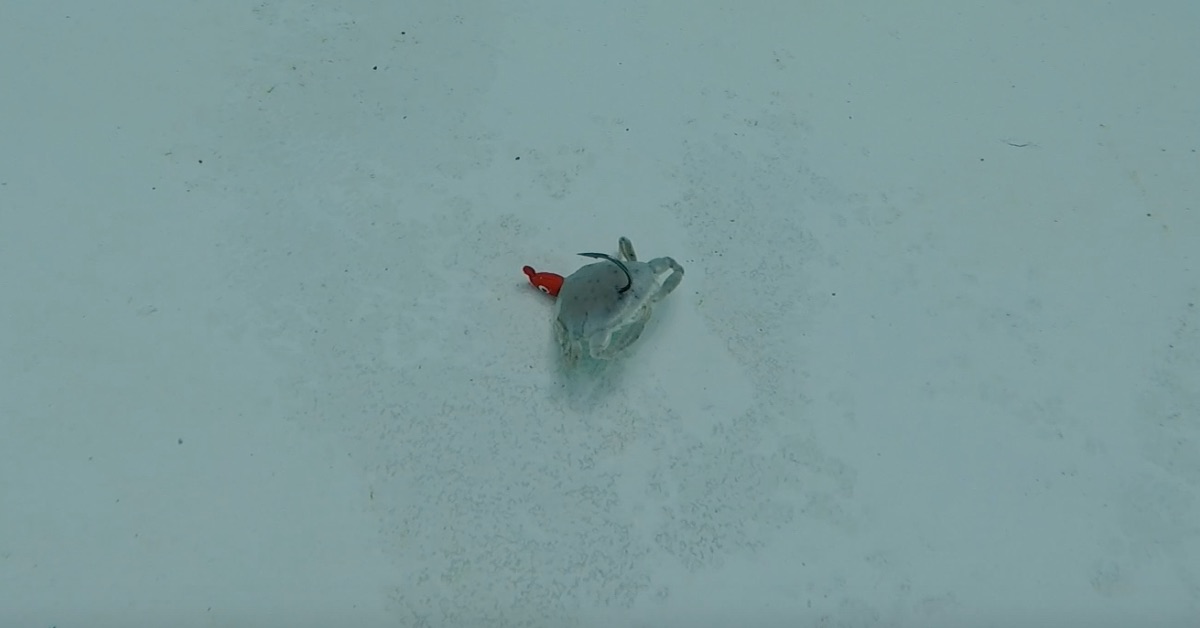Berkley Gulp Peeler Crab Review [Top Pros, Cons, & Rigging Tips]
- By: Tony Acevedo
- on
- Found In: Crab Lures, Fishing Tips, Lure Reviews, Product Reviews, Retrieving Lures

Looking to change up your offering for redfish, black drum and more?
An interesting lure on the market these days is the Berkley Gulp! Peeler Crab.
This is a scented lure that seems to fly under the radar of most saltwater anglers.
As a result, many people don’t know how to rig and fish with these crabs.
So this post will show you how to rig and retrieve these crab baits along with a full review the Gulp Crab’s (pros & cons).
Best of all, you’ll see an underwater demo on how to retrieve this crab so that you’ll know how to fish with them if you decide to give it them a try.
Note: If you have used this lure, please share your thoughts with us in the Comments section at the bottom of this post. We are not affiliated with their company at all, so your review will not get censored in any way… all good or bad reviews will get approved.
Berkley Gulp! Peeler Crab Specs

The Berkley Gulp! Peeler Crab comes in two sizes.
- The smaller size one is 1″ long and comes in two different color variations.
- The larger size one is 2″ long and comes in four different color variations.
Each Berkley Gulp! Peeler Crab pack comes with eight crab lures.
One pack of Berkley Gulp! Peeler Crabs is $6.99 on the Berkley website.
Learn more about the Insider Fishing Club
Berkley Gulp! Peeler Crab Video Review
Here is my full review of the Berkley Gulp! Peeler Crab where you can see the rigging tips and how it looks underwater.
Learn more about the Insider Fishing Club
Conclusion

The Berkley Gulp! Peeler Crab can be a good lure option for catching fish that feed on crabs.
It is best used on jig heads and other weighted hooks because the added weight is needed in order to cast it a decent distance.
Although it doesn’t cast very far, you barely need to move it to catch fish. Sometimes, you don’t even have to move it at all!
So to get good results, you’ll need to know where the fish are and then deliver this lure to them because you can’t cover a lot of range with it.
If you have any questions about this lure or have a suggestion for what product we should review next, let us know in the comments.
Tight Lines!
Related Posts:
1. Rapala Skitter Walk Review & “How To” [UNDERWATER FOOTAGE]
2. Egret Baits Vudu Mullet Review & Video [Top Pros & Cons]
3. Heddon Super Spook Jr. “How To” + Review [Top 3 Pros & Cons]
Then you’ve got to see this private fishing club! Here’s what you’ll receive today:Do You Want To Quickly Find New Fishing Spots In Your Area?
Click here to join today.
Related categories:
STOP WASTING TIME ON THE WATER!
Do what the “SMART ANGLERS” are doing and join the Insider Club.
Here’s what you’ll receive today when you join:
- Weekly fishing reports and TRENDS revealing exactly where you should fish every trip
- Weekly “spot dissection” videos that walk you through all the best spots in your area
- Exclusive fishing tips from the PROS you can’t find anywhere else
- Everything you need to start catching fish more consistently (regardless if you fish out of a boat, kayak, or land).










Hey Tony – Have you ever tried any crab lures for Tarpon? It is hard to get live crabs for bait in my area
Had some luck with these on a Carolina rig with a circle hook. Just “dead stick” it and let it sit, just like Tony said.
I have used the gulp recharge spray on a yellow foam earplug and caught some black drum and reds on that setup.
Very interesting! I’ll definitely have to give that a shot!
I have been using them on a tightline and eithe let it sit on the bottom or suspended above the weight. The fish are usually tentative at first tearing off the legs but after that the party begins. The first hit usually occurs within one to three minutes on a slow day.
Put it on the bottom in the flats or let it tumble above the weight in a current.
Anybody use this for sheepshead fishing and having any luck? If so, how are you rigging for this?
These work great for tailing reds. Just toss it within 5 yards of them, let it sat, and they will find it.
Yep! Just about any Gulp bait can be used that way. They really have something going with that scent.
Definitely an over looked gulp! bait. Always see those packed on Walmart shelves in the fishin’ department. Never thought about the jig head. Or just a circle hook with a split shot about the hook.
I’ve used the Gulp peeler crabs in the grass flats just outside Crystal River, where there are a number of pinfish and puffer fish. After my first cast all the flippers were missing from one side of the crab bait. After my second cast they were missing from both sides.
Yep unfortunately the pinfish and puffers loooove Gulp baits, and those legs on the crab are easy pickings for them. However, if you have small baitfish pecking at a lure, it can draw in the attention of a gamefish if they are nearby.
Great review on a great bait. I like to rig mine with the jig head on the side. If you look at crabs just moving around, they side-shuffle from spot to spot. It’s only if they feel threatened will they jerk straight backwards, and have a ‘claws-up’ defensive stance.
It probably makes no difference to a hungry Red. Another piece of info for my ‘brothers’ here… these things SLAY Snook on the beaches, just slowly dragged along in the ‘wave wash’ , less than knee deep about 4 ft. off the sand. You can also just leave it set there, back away from the water to keep them from spooking at seeing you, and let the ‘cruisers’ find it. Thanks again for the tips and the ‘in the water’ videos!
Thank you for the great feedback and additional info!
Great review Tony. Had a few questions, would you recommend pegging (with maybe a nail weight)like we do in freshwater to add more weight to the lure ? Or in the case there is current would you allow it to carry with no weight in the current to simulate a live crab? Thanks
Hey Pablo,
You could peg it with a nail weight, just be sure the weight is closer to the bottom of the crab so it naturally falls and doesn’t land upside down, which can be an issue with using the crabs as well.
Free lining them can be great in current, such as around inlets and passes where crabs naturally are found floating out with the outgoing tide.